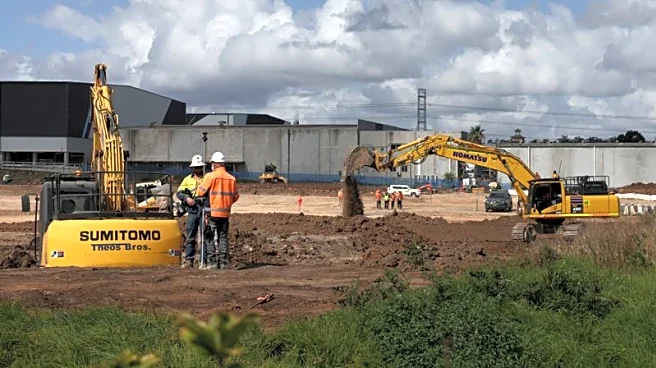What's Happening?
Sydney authorities have approved the construction of multiple data centers without requiring detailed plans to reduce water usage, raising concerns about the impact on local water resources. The New South Wales state government has green-lit all 10 data center applications since expanding its planning powers in 2021, including projects by major companies like Microsoft, Amazon, and AirTrunk. These centers are expected to consume up to 9.6 gigalitres of clean water annually, nearly 2% of Sydney's maximum supply. Despite the requirement for developers to demonstrate measures to minimize water consumption, fewer than half of the approved applications provided projections on water savings using alternative sources like rainwater. The rapid growth of the data center sector, driven by global demand for AI and cloud computing, is prompting concerns about its water needs, especially in regions with limited water supply.
Why It's Important?
The approval of these data centers without stringent water usage plans highlights a potential conflict between technological growth and environmental sustainability. As data centers expand, their significant water requirements for cooling could strain Sydney's water resources, which are already limited to one dam and a desalination plant. This situation underscores the need for balancing economic development with resource conservation, especially in areas prone to drought and water shortages. The decision to approve these projects based on non-measurable assurances may set a precedent for future developments, potentially affecting public policy and resource management strategies. The broader impact could include increased competition for water between residents and industrial users, necessitating more robust regulatory frameworks to ensure sustainable growth.
What's Next?
As the data center industry continues to grow, stakeholders may need to address the environmental implications of their operations. This could involve developing more comprehensive water management strategies and investing in technologies that reduce water consumption. Policymakers might consider revising regulations to require more detailed and measurable water usage plans from developers. Additionally, public awareness and advocacy could play a role in influencing future decisions regarding resource allocation and environmental protection. The ongoing dialogue between industry leaders, government officials, and environmental groups will be crucial in shaping sustainable practices in the tech sector.











